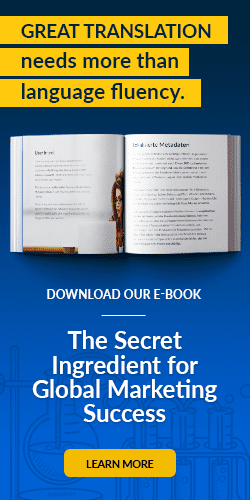First impressions are everything. How you localize your brand name—a linguistic transformation known as “brand transliteration”—may be the most important decision you make when entering several key global markets.
Why Is Brand Transliteration So Important?
As Western companies expand into markets such as China, India, Japan, South Korea and Russia, they often target customers whose primary written language doesn’t use the Latin alphabet.
Localizing a brand name into local languages and alphabets is key to getting consumers to embrace your brand. Why? It signals that you’re serious about the market, and not carelessly tossing products or services into a culture you don’t understand. Instead, you’re approaching valued customers with respect, seriousness and warmth.
Transliteration doesn’t just affect human perception of your brand—it’s also vital to SEO in international markets. Plus, in some cases it’s not optional—countries such as China and the Gulf States legally require businesses to transliterate their brand names.
How Does Brand Transliteration Work?
Translation converts meaning from one language into another, while transliteration converts words from one script into another—such as from the Latin characters used to write English to Chinese hànzì characters—and often attempts to preserve the sound of the word or phrase. It also aspires to capture the spirit, if not the precise meaning, of the original word or phrase.
That’s not as simple as it sounds. Transliterating a brand name presents both potential pitfalls and a wealth of creative opportunity.
It may result in a name that is meaningless, and therefore confusing or difficult to remember. In a worst-case scenario, the transliterated name may resemble a word in the target language that’s negative or even offensive.
Getting Transliteration Right
Great transliteration is about much more than avoiding mishaps. A transliterated brand name that’s just a meaningless collection of syllables might not hurt your company, but it’s not going to help, either.
A great transliteration combines phonetic similarity to your brand name with a locally resonant, evocative concept related to the nature of your brand, considering:
- The individual written characters used in the transliterated name
- The meanings or qualities they evoke when presented alongside other characters
For example, German auto firm BMW transliterates its name into 宝马 (bǎomǎ) for its Chinese market. The characters mean “treasure horse,” evoking the luxury and reliability of its cars. Land Rover’s transliteration—路虎 (lùhǔ)—means “the tiger of the road.”
Fluency in the cultural differences between countries is key to effectively transliterating your brand name for the international marketplace.
Starter Tips for Great Transliteration
So, how do you educate yourself on how to transliterate your brand name? Head to the internet and start investigating how global customers perceive and talk about your brand. Here are some easy-to-use tools:
- Regional search engines: Open up Yandex for Russia, Baidu for China, and Naver for South Korea, and search for your brand like a local consumer would.
- Local forums: Visit blogs, forums, and other social media where your brand is being discussed.
- Retail websites in the target market: Investigate how local resellers market your brand.
Have resellers or customers already transliterated your brand name into the local language, or is it still written in the Latin alphabet? If the answer is “both,” what’s the ratio between the two versions?
If there’s widespread, consistent usage of one particular transliteration, your work might be done for you—customers are familiar with it already, and its search-engine ranking is already building. In this case, using this transliteration in an in-language, in-market, pay-per-click campaign can boost inbound traffic.
Alternately, you can sidestep this effort and work with a turn-key website localization partner that does this work for you. They can conduct this research and provide additional insights based on their years of experience transliterating brand names and other content for global markets.
Conclusion
Names are important. Your brand name is the first impression consumers receive of your business, shorthand for everything your products or services are, and a marker of your relationship with your customer base.
As your company moves forward with its online global growth, make sure to engage experts in globalization solutions to help evaluate your brand’s options.
Last updated on August 12, 2020
